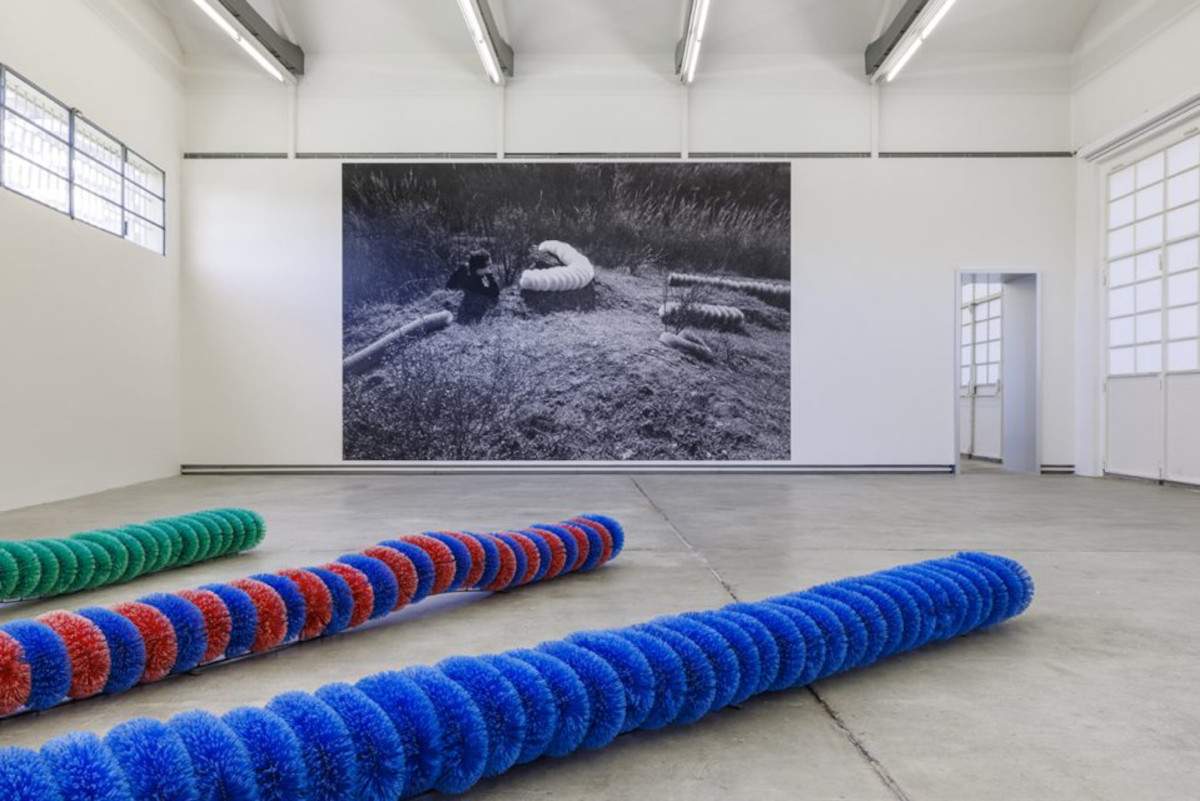In Milan, Fondazione Prada dedicates an extensive retrospective to the art of Pino Pascali
From March 28 to September 23, 2024, the Fondazione Prada will present anextensive retrospective at its Milan venue that focuses on Pino Pascali (Bari, 1935 - Rome, 1968). This exhibition project aims to explore the innovative nature of his art, particularly focusing on his sculptural production, which has had a profound influence on numerous generations of artists and critics over the past fifty years, keeping the attention of international audiences alive.
Curated by Mark Godfrey, the exhibition is divided into four sections, each offering a specific analysis of Pascali’s production. The exhibition takes place in three buildings located at the Milan venue: the Podium, the North Gallery and the South Gallery. Conceived by studio 2x4, the exhibition includes forty-nine works by Pino Pascali from Italian and international museums, as well as from important private collections. Also on display are nine works by post-World War II artists, a selection of photographs and a video documenting the artist along with his creations.
The first section outlines the revolutionary approachtaken by the artist in his exhibitions between 1965 and 1968, characterized by the bold creation of original environments, going beyond the mere display of his works from the studio. The second section delves into Pascali’s most significant interventions in important group exhibitions of the period, also examining the works of other artists who shared the exhibition space with him, thus offering a broad and in-depth overview of the artistic and cultural context of the time. The third section delves into the interaction between Pascali and his sculptures through the lens of renowned photographers such as Claudio Abate, Andrea Taverna and Ugo Mulas, who capture not only the beauty of the works, but also suggest new perspectives on the interpretation of his work. Finally, the fourth section dives into an analysis of Pascali’s skillful use of natural and industrial materials, exploring their origin, commercial application, their use by other artists and their evolution over time, thus revealing the many facets of his artistic practice and its lasting impact on the contemporary art scene.
“Pascali,” as Mark Godfrey writes in the text published in the catalog, “explored the relationship between sculpture and props and juxtaposed sculpture and utilitarian objects. He created works that from a distance look like ready-mades, but at a closer look turn out to be made from salvaged materials. He questioned the potential of ’fake’ or ’simulated’ sculpture. He titled the works as if they were solid bodies, winking at his audience, which in turn was aware that they were empty volumes. He used natural elements such as earth and water along with construction materials such as eternit, and divided his seas and fields into modular units. He brought new consumer products and synthetic fabrics into the studio to create animals, traps, and bridges. And while the complexity of his approach to sculpture is unquestionable, the factor that makes his artistic practice so ingenious and original is another. Pascali is an ever-present artist because he was an ’exhibitionist.’ Pascali understood that postwar artists had to devote as much energy to exhibition activity as they did to finishing works in the studio.”
For all info you can visit https://www.fondazioneprada.org/
Image: Pino Pascali, Prada Foundation, Milan. Photo by Roberto Marossi. Courtesy Fondazione Prada
 |
| In Milan, Fondazione Prada dedicates an extensive retrospective to the art of Pino Pascali |
Warning: the translation into English of the original Italian article was created using automatic tools. We undertake to review all articles, but we do not guarantee the total absence of inaccuracies in the translation due to the program. You can find the original by clicking on the ITA button. If you find any mistake,please contact us.





























